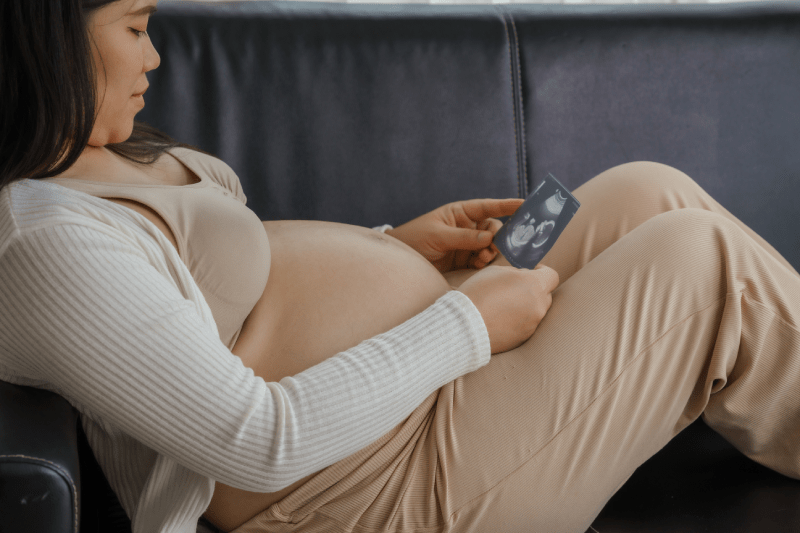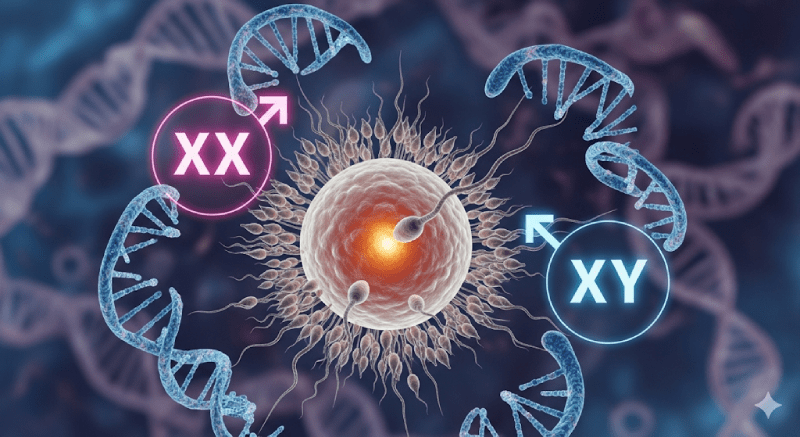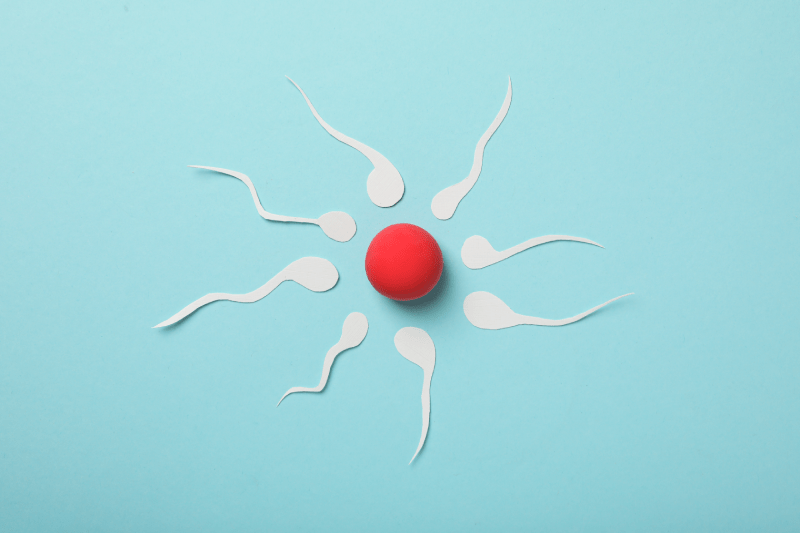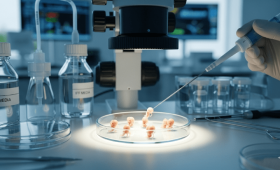What Is The Scientific Basis Of Gender Selection?
The scientific basis of gender selection relies on an advanced laboratory technology called Preimplantation Genetic Testing (PGT). This test involves examining the genetic structure of embryos created in a laboratory environment through In Vitro Fertilization (IVF) before they are transferred to the uterus. It analyzes the X and Y chromosomes of each embryo to determine whether the embryo is female (XX) or male (XY) with an accuracy of over 99%. Gender selection is essentially the use of the PGT method, originally developed to check the embryo’s genetic health, adapted for social demands.
Is Gender Selection Mandatory In IVF Treatment?
No, gender selection is not a mandatory procedure in IVF treatment and is generally performed upon social request without medical necessity (family balancing). Gender selection becomes mandatory only when medical necessity requires preventing the risk of a serious gender-linked hereditary disease (such as X-linked recessive disorders) known in the family from being passed on to the baby. Any request for gender selection outside of this medical necessity is a service added to the PGT-A test, increasing the overall cost and complexity of the treatment.
How Does The PGT-A Method Enable Gender Selection?
The PGT-A (Aneuploidy Screening) method is designed to check whether the chromosome number in embryos is normal (euploid). While performing this screening, the health of the embryo is examined, and the sex chromosomes (X and Y) are also analyzed. The genetic laboratory reports the embryo’s genetic health status and gender based on this analysis. According to the couple’s request, the embryo of the desired gender, confirmed to be genetically healthy, is selected for transfer, thus achieving gender selection.
What Is The Accuracy Rate Of The Gender Determination Procedure?
The accuracy rate of the gender determination procedure using the PGT method is over 99%. This high accuracy rate stems from the analysis of the cell sample (biopsy) taken from the embryo using the latest generation genetic sequencing (NGS) technologies in the laboratory. This near-perfect accuracy provides couples with great confidence that the embryo to be transferred will be of the desired sex. However, it should be kept in mind that, as with any medical procedure, there may be a very small margin of error.
How Is The Embryo Biopsy Procedure Performed?
The embryo biopsy procedure is performed by an experienced embryologist and usually on the 5th or 6th day when the embryo reaches the blastocyst stage. The procedure involves taking a few cell samples from the outer cell layer (trophectoderm), which will not form the baby, using a special laser or micropipette. This cell sample contains the embryo’s genetic material. This careful and sensitive biopsy procedure must be performed in modern, technologically equipped laboratories to ensure minimal harm to the embryo.
Which Stage Of The Embryo Is Awaited For Biopsy?
The embryo is usually expected to reach the blastocyst (5th or 6th day) stage for the biopsy. The blastocyst is a structure consisting of approximately 100-200 cells that has started to differentiate. The reason for performing the biopsy at this stage is to safely sample the outer cell layer (trophectoderm) without damaging the inner cell mass that will form the baby. Since blastocyst-stage embryos also have a higher viability and implantation potential, this stage is the most ideal time for genetic testing before transfer.

In Which Countries Is Gender Selection Legal Outside Of Medical Necessity?
The number of countries that legally allow social gender selection for family balancing purposes, outside of medical necessity, is limited. The most preferred and known centers by international patients are generally located in places such as the Turkish Republic of Northern Cyprus (TRNC), certain US states, and Mexico. These countries offer PGT services at international standards, providing couples with the opportunity to utilize this option within a legal framework. It is important for couples to confirm the current legal regulations of the relevant country before planning their trip.
Why Is It Necessary To Go Abroad For Gender Selection?
The main reason it is necessary to go abroad for gender selection is the legal restrictions in the couple’s home country. Many countries, including Turkey, have banned social (family balancing) gender selection due to ethical concerns. Therefore, couples who wish to receive this service must go to countries where it is legally permitted, such as Northern Cyprus or Mexico. Clinics abroad not only offer this service on legal grounds but also often provide additional advantages such as more affordable packages and shorter waiting times.
Can Social Gender Selection Be Performed In Turkey?
No, according to the laws of the Republic of Turkey, gender selection is strictly prohibited within the scope of IVF treatment for social reasons (e.g., for family balancing of a girl or boy child). The Turkish Ministry of Health permits the PGT procedure only when there is a risk of the couple carrying a gender-linked hereditary disease (medical necessity). This legal restriction obliges couples considering treatment in Turkey and wishing to perform gender selection to evaluate overseas options for this purpose.
What Affects The Success Rate Of Gender Selection Treatment?
The most important factor affecting the success rate of gender selection treatment is, again, the prospective mother’s age. As age advances, egg quality decreases, and the chance of finding a genetically normal (euploid) embryo of the desired sex after PGT drops. However, factors that increase success also include the technological quality of the laboratory, the biopsy experience of the embryology team, and the state of the uterus to accept the embryo (endometrial receptivity). Since the PGT procedure selects the most genetically healthy embryo, the success rate per transfer may be higher than standard IVF.
Does The PGT Procedure Harm The Embryo’s Health?
Although cell sampling (biopsy) from the embryo is necessary during the PGT procedure, this procedure carries a minimal risk of harm to the embryo. Since the biopsy is taken from the outer cell layer (trophectoderm), which will form the placenta and membranes, rather than the cells that will form the baby, the risk is low. Modern PGT techniques and freezing methods (vitrification) are so advanced that when genetically healthy embryos confirmed after the biopsy are thawed and transferred, viability and implantation rates are high.
What Is The Average Cost Of Gender Selection Treatment?
The average cost of gender selection treatment includes the cost of a standard IVF cycle plus the PGT (gender and genetic screening) fee. Depending on the country, this total cost generally ranges between $7,000 and $12,000 (including basic IVF and PGT). Although this pricing is much more affordable in popular centers like Northern Cyprus compared to US prices, it is important for couples to also include additional expenses such as medication, travel, and accommodation in their budget.
How Is The PGT Cost Added To The Standard IVF Fee Calculated?
The PGT cost added to the standard IVF fee generally consists of two main components: the clinic’s biopsy and embryo preparation fee and the genetic laboratory’s genetic analysis fee. This fee typically varies depending on the number of embryos to be examined. Some clinics demand a fixed package fee for a certain number of embryos, while others charge separately for each embryo. This extra cost may require an additional budget generally ranging between $2,000 and $4,000.
How Are Medication Expenses Calculated In Gender Selection Treatment?
Medication expenses in gender selection treatment, as in basic IVF treatment, are calculated individually based on the prospective mother’s age, ovarian reserve, and the determined stimulation protocol. These expenses are not included in the treatment package and can vary greatly depending on the country where the drugs are procured. Even in overseas centers that may be more affordable than Turkey, medication expenses generally constitute an additional cost of $500 to $3,000. Learning the net prescription and cost of medications before starting treatment is critically important.

What Is Family Balancing And Why Is Gender Selection Requested?
Family Balancing is the desire of a couple to have a child of the opposite gender when they already have one or more children of a certain gender. This is a non-medical, social reason and constitutes the vast majority of gender selection requests. Couples prefer this method to ensure gender diversity among their children and establish balance in their family structure. Although this request leads to ethical debates, it is offered as a legitimate practice in legal centers.
How Long Do PGT Results Take To Come Out?
The time it takes for PGT results to come out generally varies between 7 and 14 days after the embryo biopsy is performed. This duration depends on the analysis intensity of the genetic laboratory and the technology used. Embryos are frozen immediately after the biopsy, and the genetic report is awaited. The results include both the embryo’s genetic health and its gender. After the result report arrives, the transfer date is planned according to the couple’s preference and the doctor’s approval.
How Is The Gender Of The Embryo To Be Transferred Confirmed?
The gender of the embryo to be transferred is definitively confirmed with the detailed PGT report from the genetic laboratory. The report specifies the chromosome structure (euploid/aneuploidy) and sex chromosomes (XX or XY) of each embryo. The doctor evaluates this report with the couple, and the embryo of the desired sex, confirmed to be genetically healthy, is selected for transfer. This official genetic report is the most important guarantee document at this stage of the treatment.
How Does The Age Factor Affect The Chance Of Finding A Healthy Embryo Of The Desired Sex?
The age factor directly and negatively affects the chance of finding a healthy embryo of the desired sex. As age advances, especially after 35 years old, the rate of genetically abnormal (aneuploid) eggs increases. Since a large portion of the embryos screened with PGT turn out to be unhealthy, the number of embryos that are both of the desired sex and genetically normal significantly decreases. This situation makes gender selection treatment for older couples both more costly and a longer process.
What Other Genetic Diseases Can The PGT Procedure Screen For?
In addition to gender screening, the PGT procedure allows for the screening of other important genetic conditions in embryos. PGT-A (Aneuploidy Screening) checks for abnormalities in the entire chromosome number (such as Down Syndrome). PGT-M (Monogenic Disease Screening), on the other hand, is used to detect whether single-gene diseases known in the family, such as cystic fibrosis or thalassemia, have been passed on to the embryo. Gender selection is typically information obtained as a side result of PGT-A screening.
In Which Cases Is Gender Selection Medically Mandatory?
Gender selection becomes medically mandatory only to eliminate the risk of a serious gender-linked hereditary disease (such as X-linked recessive disorders) being present in the embryo. In such cases, it is certain that the disease carried by the couple will only manifest in a specific gender. Doctors recommend transferring the embryo that does not carry this risk (even if it is not the desired gender) to achieve a healthy pregnancy. This practice is allowed under PGT-M and is ethically accepted.
How Are High-Quality Embryos Obtained?
Obtaining high-quality embryos is vital for treatment success, and this depends on the correct stimulation protocol, egg and sperm quality, and laboratory conditions. Embryologists grade embryos based on their cell division rates, cell counts, and morphological (structural) characteristics. Embryos that reach the 5th day (blastocyst) and have regular inner and outer cell structures are considered high quality. High-tech and experienced laboratories focus on optimizing embryo development.
Can Gender Selection Be Applied Retroactively To Frozen Embryos?
For gender selection to be applied retroactively to frozen embryos, the embryos must not have been biopsied for PGT previously. If a biopsy has not been performed, frozen embryos can theoretically be thawed, biopsied, and PGT applied. However, since each stage of thawing, biopsy, and re-freezing the embryo risks the embryo’s viability, this method is generally a high-risk and undesirable approach. The decision for gender selection should be made before the biopsy and freezing procedure.
What Preliminary Tests Are Required Before Starting Treatment?
Before starting gender selection treatment, overseas clinics mandate the performance of basic IVF preliminary tests. These tests include ovarian reserve tests such as AMH, FSH, E2, and uterine assessment for the prospective mother; and a current and detailed sperm analysis for the prospective father. Additionally, infectious disease screenings (HIV, Hepatitis, etc.) are requested from both partners. Having these preliminary tests done in your home country and sending the results with an English translation to the clinic shortens the duration of stay abroad.
How Long Is The Stay Abroad For Gender Selection Treatment?
The duration of stay abroad for a full fresh IVF cycle involving gender selection usually varies between 15 and 20 days. This period covers the entire process from the start of ovarian stimulation to the embryo biopsy stage. Since embryos are frozen while PGT results are awaited, couples can return to their home country at the end of this 15-20 day period. For a Frozen Embryo Transfer (FET) performed after PGT results are received, a shorter trip of typically 3 to 7 days is sufficient.
How Are Accommodation And Travel Organized During Overseas Treatment?
Accommodation and travel organizations during overseas treatment are generally managed by specialist medical tourism agencies like Cure Holiday. The agency organizes comfortable and hygienic accommodation options (hotels or apartments) close to the clinic during the treatment period. Airport transfers and local transportation to and from clinic appointments are also planned. This logistical support allows couples to focus entirely on the medical process instead of dealing with the organizational stress of being in a foreign country.
How Is The Language Barrier Overcome In Overseas Treatment?
The language barrier in overseas treatment is overcome with multilingual patient coordinators and professional translation services provided by international patient-accepting clinics and Cure Holiday. These coordinators manage all communication, appointment scheduling, translation of medical reports, and the flow of information between the clinic and the patient. The presence of interpreters proficient in medical terminology during critical stages such as egg retrieval and transfer helps couples feel secure and prevents misunderstandings.
What Are The Ethically Controversial Aspects Of Gender Selection?
The ethically controversial aspects of gender selection revolve around the potential for this practice to lead to social gender inequality and the use of medical technology for purposes other than medical necessity. Many ethics committees argue that genetic selection should be limited solely to preventing a serious disease. Social reasons like “family balancing” challenge these ethical boundaries. It is important for couples to consider these ethical responsibilities and the societal impacts of the practice before starting treatment.
What Is The New Treatment Cost In Case Of Recurrent Failure?
When a PGT IVF attempt for gender selection fails, the new treatment cost depends on whether genetically healthy frozen embryos remain from the previous attempt. If frozen, desired sex, and healthy embryos are available, only the Frozen Embryo Transfer (FET) fee is paid, which is much lower than a full cycle. If a new egg retrieval and PGT procedure are required, the cost will be close to the full cycle fee (including PGT). This possibility of repetition should always be considered in financial planning.
What Additional Laboratory Techniques Increase Gender Selection Success?
Additional laboratory techniques used to increase gender selection success aim to optimize embryo selection and uterine preparation. These include Time-Lapse (Embryoscope) incubators, which help select the most potent embryo by monitoring them continuously, and ERA (Endometrial Receptivity Analysis), which helps determine the most appropriate time for transfer to the uterine lining. These advanced technologies aim to maximize the chance of success per transfer, accelerating the return on investment in the treatment.

What Documents Should Be Prepared For Gender Selection Treatment?
The basic documents that need to be prepared before traveling abroad for gender selection treatment are: Copies of the couple’s ID/passport, marriage certificate (mandatory for some countries), English translations of all previous test results, and a health report summarizing their treatment history. Additionally, informed consent forms required by the clinic and necessary travel insurance documents must be complete. Completeness of documents prevents delays in appointments.
How Should Pregnancy Follow-up Be Done After Gender Selection?
When pregnancy is achieved after gender selection, follow-up upon returning home after the overseas treatment must be done by a local obstetrician and gynecologist. The use of progesterone and other supportive medications determined by the overseas clinic should continue with the local doctor’s knowledge. Submitting a comprehensive report from the overseas clinic, including all treatment and transfer details, to your local doctor is critically important for healthy and continuous pregnancy follow-up.
What Are The Possible Side Effects During The Treatment Process?
The possible side effects of gender selection treatment are the same as those of basic IVF treatment and arise from the hormone medications used. The most common ones include abdominal bloating, mild headaches, breast tenderness, and emotional fluctuations. The rare but serious risk of Ovarian Hyperstimulation Syndrome (OHSS) is minimized in modern clinics applying PGT through personalized protocols. Most of these side effects are temporary.
Are There Legal Risks To Receiving Treatment Abroad?
There is no direct legal risk for couples receiving treatment at a clinic that is legally permitted to perform gender selection abroad. Couples act in compliance with the laws of the country where they receive treatment. However, if this practice is banned in their home country, any attempt to transfer embryos illegally or smuggle them into a country with legal restrictions must be strictly avoided, as this carries significant legal risks.
How To Choose A Reliable And Legal Overseas Clinic?
When choosing a reliable and legal overseas clinic, the focus should be not just on the price but on the legal basis, the clinic’s international accreditations (JCI, ISO), and the technological quality of the PGT laboratory. The clinic’s language support and logistical organization skills for foreign patients are also important. Centers that share transparent success rates, have an experienced team, and fully comply with legal regulations should be preferred. Cure Holiday carefully selects legal and reliable centers suitable for these criteria for you.
How Does Cure Holiday Provide Support In This Gender Selection Journey?
Cure Holiday simplifies the entire process by providing you with A-to-Z support in your gender selection journey. This support includes selecting reliable overseas clinics that legally offer gender selection services, have high success rates, and meet international standards. Furthermore, it manages all logistical processes such as arranging treatment packages suitable for your budget, travel and accommodation organization, airport transfers, and providing professional interpretation services throughout the treatment. With Cure Holiday, you can get rid of the organizational burden and focus solely on your treatment.



